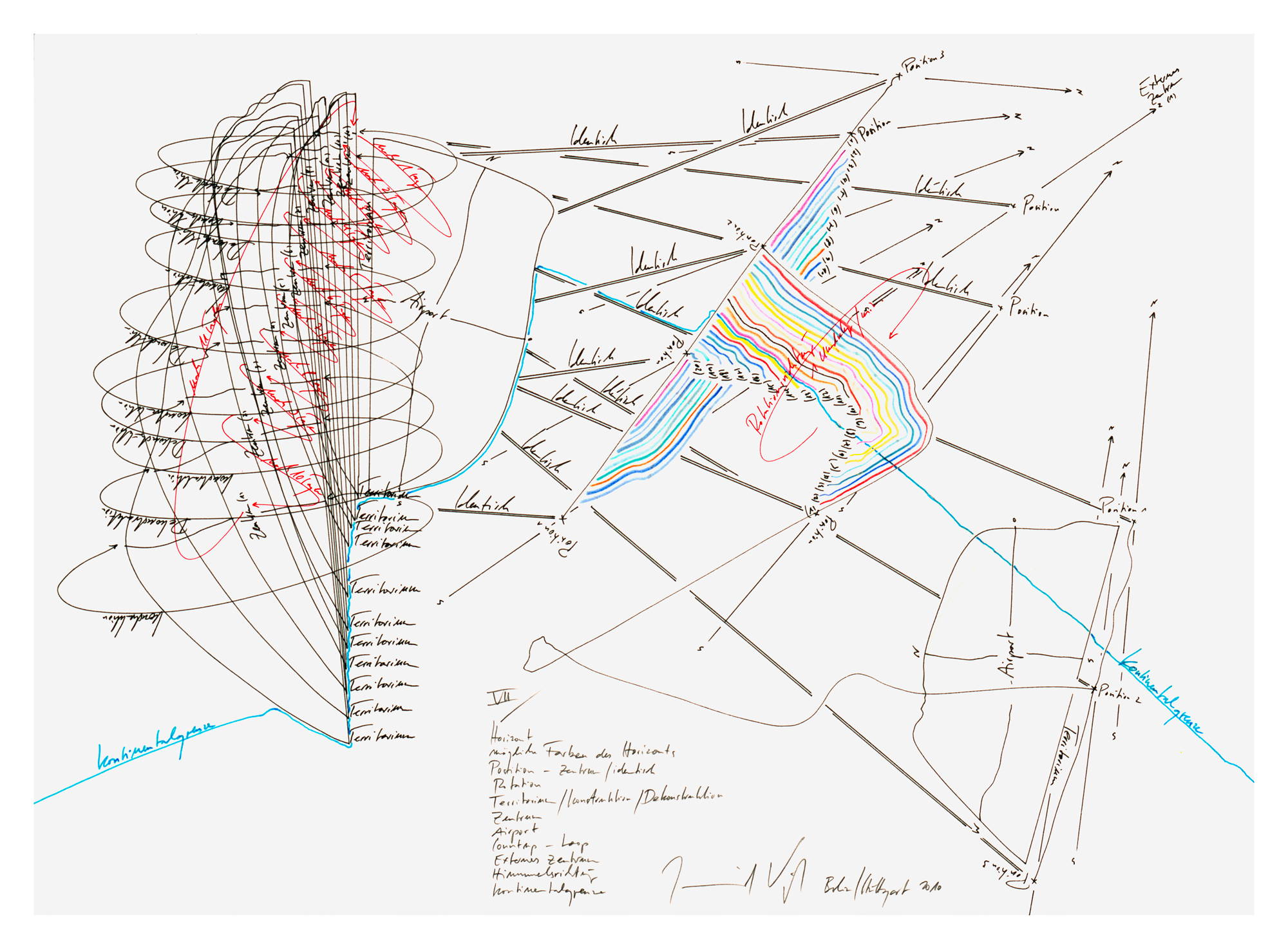
Horizon
The line of the horizon is one of the most fundamental points of orientation for our perception. It always runs horizontally according to conventional reception.
The way of recording this line as one that can adopt any conceivable form results from a translation of the movements which the body may make during observation. The line is seen or conceived from a moving/active standpoint and it reproduces the “trace” of its movement in the course of observation. The trace of movement may adopt any kind of line, ranging from standstill to pirouette, which a moving body can complete in space.
Possible colours of the horizon
Along a freely chosen part of the drawn horizon line, I draw a freely selected spectrum of possible colours that the line might have. Because light includes all colours, in theory every colour is possible. Every coloured line is marked with a number corresponding to the order in which they were registered (the first line with (1), the second line with (2)….). The lines are drawn beside one another and over each other, and every single one represents a further possibility as the very first line. The totality of the repetitively realised colour possibilities of the horizon line visualises a spectrum of colour possibilities, which is represented by a field of many colours within the notation.
Position / direction
Positions are drawn at the beginning and the end of the horizon line, as well as the points at which the colour spectrums begin and end. Position identifies an imaginary position adopted by the viewer. The position is provided with information about direction. The northern tip of the arrow is always directed towards one of the external centres registered on the sheet. This can result in a large number of different directions north when there are many positions within a drawing. It serves to indicate a movement that has taken place between 2 or more positions or represents a call to re-position oneself within the space.
The different positions stand for possible standpoints in the present, past or future. Just as they define the possibility of different positions, they also stand for the demand to imagine a geographical shift in position.